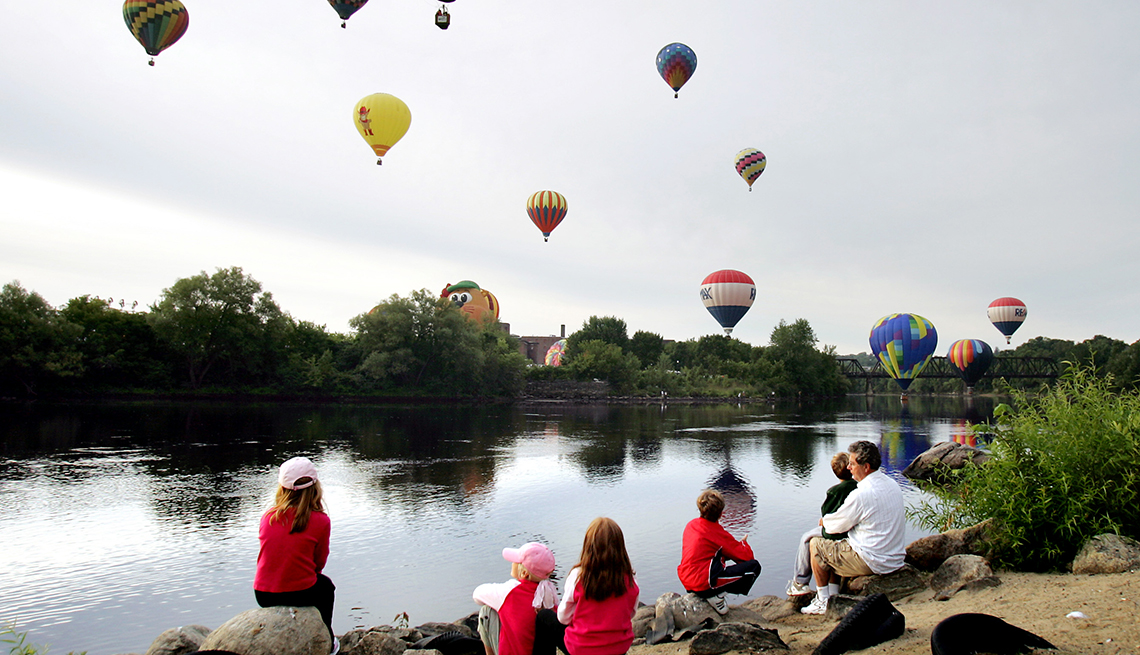10 Great Small Cities for Retirement
Looking for a place where there's lots to do, but you won't get lost in the crowd? Check out our top picks
En español | In thinking about your retirement plans, are you drawn to urban living but deterred by the chaos, crowds and high cost of big-city life?

Adam Jeffery/Getty Images
Lakes and mountains are a summer treat for grandchildren in Burlington, Vermont.
If so, you might find just what you're looking for in a small city — one that combines the energy and excitement of cosmopolitan life with the charm and neighborliness of a small town.
To help you find such a place, we scoured dozens of small cities throughout the United States and selected our 10 favorites.
In making our picks, we focused on cities with a unique sense of place and a manageable size: Each has a population under 100,000 — small enough to easily navigate but large enough to offer a wide array of culture, amenities and services. These are cities with fairly solid economic foundations and low crime rates. Many are home to colleges and universities, as well as museums, concert halls and theaters.
Take a look at our list and see if you can find the city that feels just right for you.
Burlington, Vermont
What's not to love about a town that offers world-class urban planning, a thriving, artsy economy and easy access to myriad outdoor activities, including excellent skiing and sailing? Ah yes: the cold. OK, Burlington is in northern Vermont, which means winters come early, stay late and mean business. But to many folks, that's a fair trade off.
See also: Where to retire for a good life for less
Burlington, located about 180 miles northwest of Boston and 75 miles south of Montreal, scores high for livability among seniors. In 2008, AARP honored the Winooski Falls neighborhood with a livable community award for its blend of businesses, residences, public transportation and recreational spaces.
The city's centerpiece is Church Street Marketplace, a four-block, partially enclosed pedestrian mall that mixes Victorian and Art Deco buildings with modern structures to create a thriving city center. Casual and fine dining, coffee shops and bars, galleries and shops — it's all here. The site of the first Ben & Jerry's ice cream shop, founded in the late 1970s, is now a parking lot but its reincarnation is nearby on Church Street. The marketplace, like much of Burlington, often buzzes with college-town energy from the 11,000 students at the University of Vermont.
Retirees seeking culture can check out the Flynn Center for the Performing Arts, a 1,453-seat Art Deco masterpiece built in 1930, which hosts the local symphony, a musical theater group, touring musicians and, in June, the Discover Jazz Festival. Classical and jazz musicians perform on the UVM campus, and professional and student actors take the stage at the university's Royall Tyler Theatre. And UVM's Robert Hull Fleming Museum has an extensive collection of fine art and ethnographic material, as well as space for traveling exhibits.
The city sits on the shores of Lake Champlain, a great place for sailing, kayaking, fishing and more. Miles of lakefront trails keep walkers, joggers and cyclists in shape, and numerous ski resorts, including Stowe, Sugarbush, Mad River Glen and Jay Peak, are within easy reach.
Reasons for pause, besides the winters, include high taxes and expensive housing. But the median household income is also way above average, and housing foreclosures are almost unknown. If your retirement daydreams involve a healthy, culturally rich, lakeside town, Burlington may be for you.
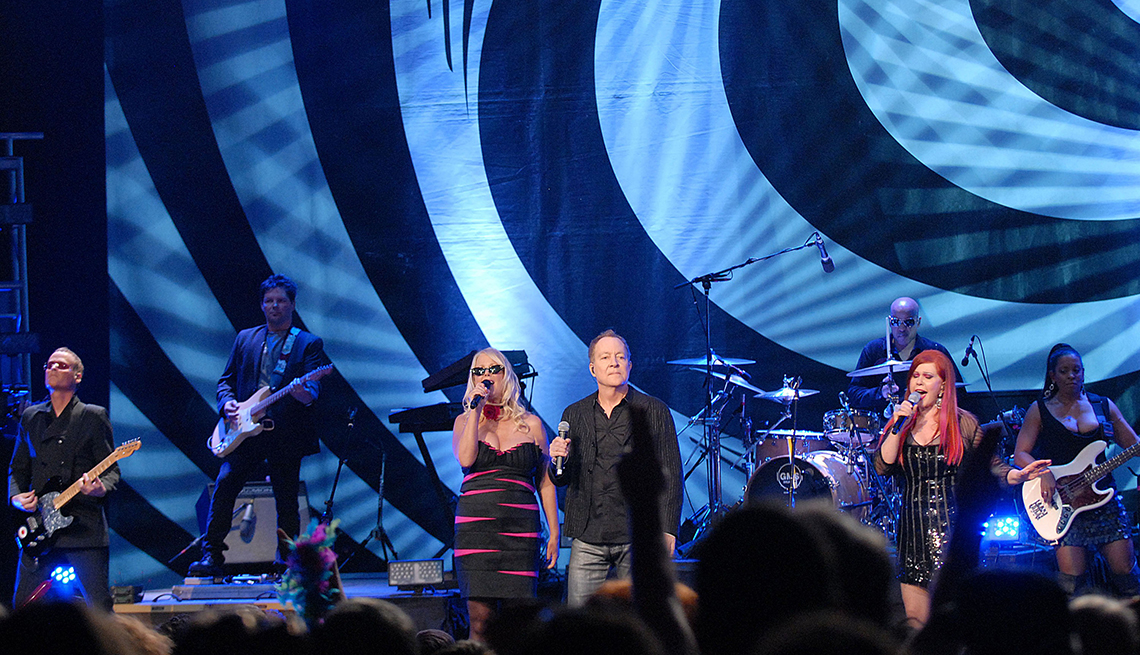
Chris McKay/WireImage/Getty Images
The B-52s perform an anniversary concert at the Classic Center in Athens, Georgia.
Athens, Georgia
Great architecture is the hallmark of great cities, and in Athens, 70 miles east of Atlanta, it's all about the antebellum-era buildings and Victorian era homes. The city's 16 historic districts complement a vivacious downtown, a 300-acre State Botanical Garden and a pace of life well suited to retirement.
See also: The 10 most affordable cities
The city is home to the University of Georgia and is legend for its music scene, which produced such big-name bands as R.E.M. and the B-52s. UGA's Performing and Visual Arts Complex is among the top fine arts facilities in the South. It includes the Hodgson School of Music; the Performing Arts Center, which has a 1,100-seat auditorium; the Lamar Dodd School of Art (studios, lecture halls, galleries, a media center and an eco-friendly "green roof"), and the Georgia Museum of Art with 9,000 square feet of exhibition space; and dance, theater and film programs. The arts calendar at the university is always packed. UGA's Osher Lifelong Learning Institute caters to adult students and offers a number of noncredit courses.
The tree-lined streets of downtown Athens are home to numerous venues, including the famous 40 Watt Club and Georgia Theatre, along with a full slate of restaurants, shops, services and more. Don't feel like paying for stuff? The city has a Really Really Free market, a giant free swap meet in a city park.
For active retirees, golf is big here, and the Athens Bicycling group welcomes riders of all ages and speeds. Also, the city is 60 miles south of Chattahoochee-Oconee National Forest. Winters are mild and summers hot, with 49 inches of rain spread fairly evenly throughout the year.
For spectators, college sports are serious business here: The university's Bulldogs, with NCAA Division I teams in most sports, inspire epic tailgating and frenzied rivalries with Georgia Tech and Auburn University.

Joel W. Rogers/Corbis
Sports and the outdoors draw active seniors to retire in Bellingham, Washington.
Bellingham, Washington
Any city with a six-month rainy season that still draws high marks from happy residents must have a lot going for it. In Bellingham, the list of attributes is long and plays to the wants of many older Americans: world-class sailing, hiking and scenery, a manageably sized city, a cool arts scene and easy access to Canada if things get hairy in the U.S.
See also: Where to live on $100 a day
First, the rain: Curtains of misty moisture can sock in for days during late fall and winter. But the average annual rainfall of 35 inches doesn't even come close to the top 10 rainiest cities in the U.S. Bellingham summers are sunny and temperate, with an average of fewer than six rainy days in July and August combined.
The metro area extends throughout Whatcom County (population 187,000), with Puget Sound to the west, the Canadian border to the north, and the Cascade Mountains to the east. Most of the area, including the 14 local golf courses, enjoys a clear view of Mount Baker (elevation 10,778), a popular ski resort.
Bellingham sits right on the sound, where killer whales compete for fish with commercial and sport boats. The town lies 80 miles north of Seattle and 55 miles south of Vancouver, British Columbia — both accessible by Amtrak — in an ideal location for retirees who want urban conveniences without the hassles of city life. Bellingham can feel like a mini Seattle or Portland, Ore., with active, eco-conscious locals and a downtown farmers market.
Unemployment is below the national average, but so are wages because most jobs are in education, government, retail and other low- to moderate-paying sectors. But the cost of living is in the top 10 percent of U.S. metro areas, mostly because of high housing prices.
Locals are highly educated — fed by the 13,800 students at Western Washington University — and opportunities do exist for skilled workers. WWU welcomes adult students, and runs an Academy for Lifelong Learning geared toward retirees.
WWU's College of Fine and Performing Arts keeps the cultural calendar packed. And Bellingham has an active theater scene. The glitziest venue is the Mount Baker Theatre, a restored Moorish movie palace built in 1927 — and the city draws a lot of high-profile touring acts.
Some caveats: Mount Baker is an active volcano, and when it finally blows a tsunami of mud might bury large sections of Whatcom County. Bellingham is also short of hospital beds, and the nearest big medical center is about 50 miles south of town in Everett.
But violent crime is low and life expectancy is high, in part because residents are unlikely to be obese. Nothing like a little extra peer pressure to stay healthy in retirement.
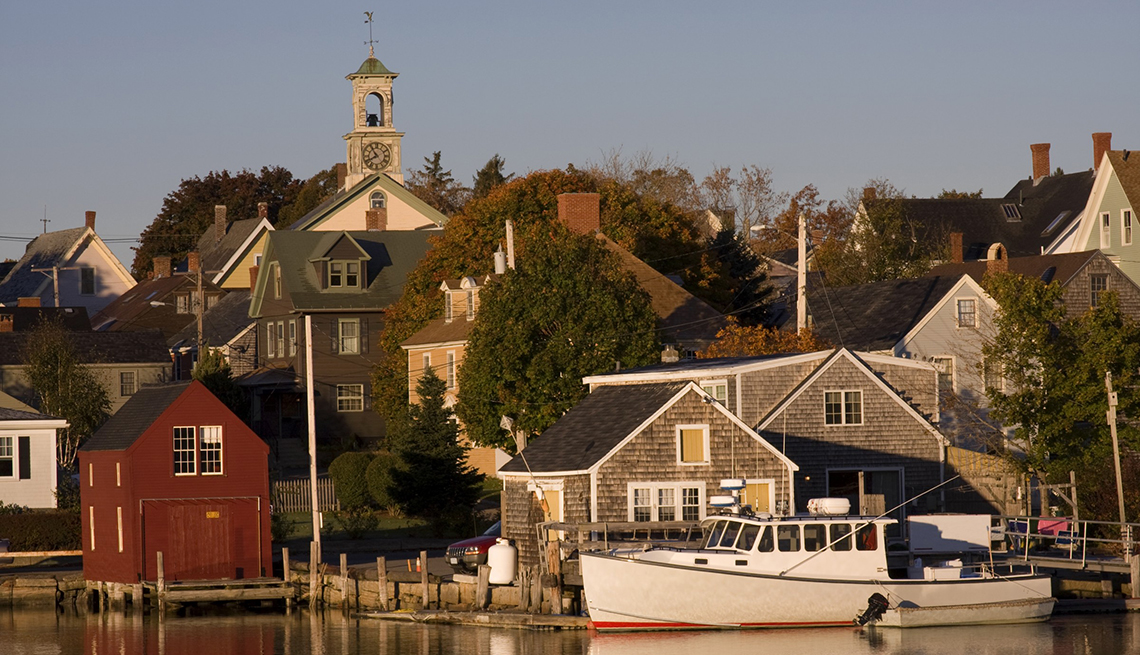
Ocean/Corbis
Portsmouth, New Hampshire, is a quintessential New England town near mountains and the ocean for retirees.
Portsmouth, New Hampshire
The epicenter — but by no means the only center — of southeast New Hampshire is Portsmouth (population: 20,500), which was named by the National Trust for Historic Preservation as "one of the most culturally rich destinations in the country." Its streets are filled historic buildings, sidewalk cafes, galleries, boutiques and jazz clubs.
See also: 10 sunny places to retire to
One allure of Portsmouth is that it's nestled amid nearly 50 picturesque New England towns in the region, many of which have grown enough to offer residents a sampling of city conveniences within the slower pace of village life.
Portsmouth is in Rockingham County, which also includes Derry (population 23,000) and Salem (29,000); all three are within commuting distance of Boston. Upstream is Strafford County, which includes the mill towns of Dover (29,000), Rochester (32,000) and Durham (9,100), home to the main campus of the University of New Hampshire (enrollment 15,600). All these towns are steeped in history — some were founded 400 years ago — that will make any retiree feel young.
UNH's Museum of Art houses a permanent collection of more than 1,500 works and also supports exhibitions, concerts and poetry readings. University music programs support more than a dozen student bands, orchestras and vocal groups. Movies, plays and lectures are always on the bill at the Memorial Union Building. Nearby Exeter (9,900) is packed with Victorian architecture, bell towers, stone walls and a cute downtown.
Unemployment is low, thanks to a diverse economy based on health care, education, telecommunications and more. The median household income is in the top one-10th in the U.S., but the cost of living is almost as high, mostly because of steep home prices and property taxes.
But the overall tax burden is low, because the state has no sales tax or income tax. Want outdoor activity? You can go clamming and swim in the Atlantic Ocean, hike 1,342-foot Nottingham Mountain, and end the day with a dip in freshwater Merrymeeting Lake, all within Rockingham and Strafford counties.
The area has fine golf courses, 66 miles of coastline for sailing, and several marshes and rivers that are excellent for canoeing and kayaking. Portsmouth's Isles of Shoals are a delightful day trip. Mountain bikers enjoy the Rockingham Recreational Trail, which runs for 26 miles.
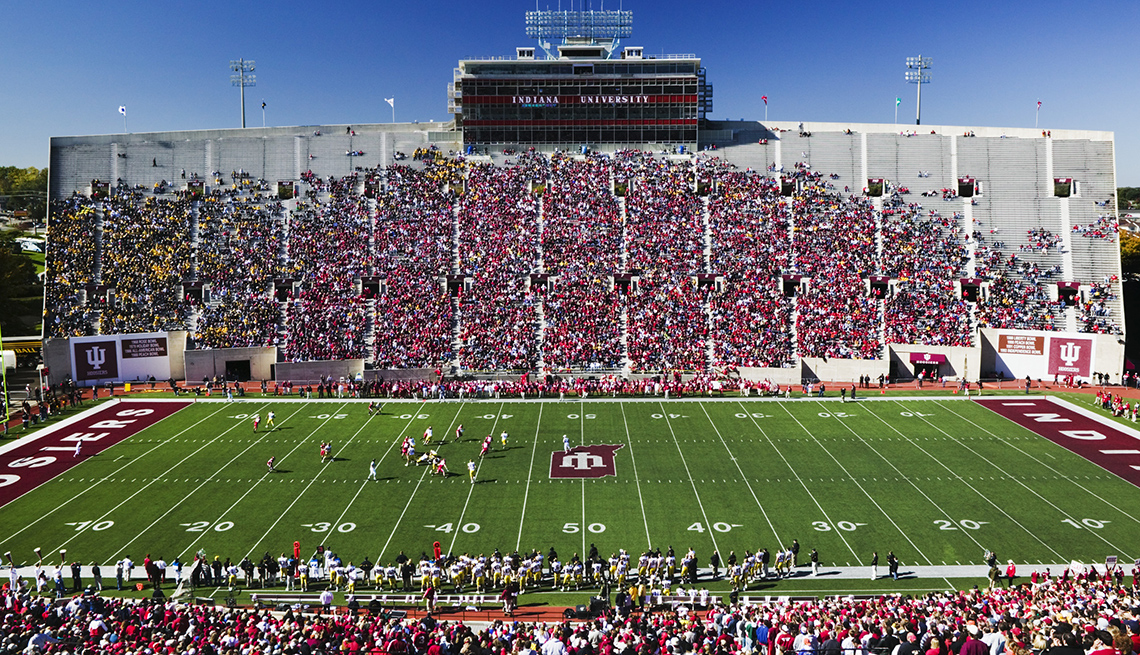
Walter Bibikow/Corbis
Indiana University sports dominate Bloomington, Indiana, where retirees can attend games.
Bloomington, Indiana
This hip college town, about 50 miles southwest of Indianapolis, is cultured, outdoorsy and — thanks largely to the 38,600 students at Indiana University (IU) — progressive.
See also: Best places to retire abroad
While rural Indiana is a stronghold of fundamentalist Christianity, Bloomington residents are likely to say that they're not religious in any way. The popular gay publication, The Advocate, named Bloomington the fourth gayest city in America. Bloomington votes overwhelmingly Democrat in what is otherwise a swing state. And while much of Indiana is rolling farms and subdivisions, Bloomington has a charming downtown lined with mature trees, adjacent IU's expansive campus.
If you're hoping to work in your retirement, the jobs created by the university, General Electric, Otis Elevator, Baxter and others prompted Forbes magazine in 2008 to name Bloomington the third-best small city in the U.S. for business and careers. IU is a major research university with a large continuing education division.
Culturally, Bloomington is stacked. IU's Jacobs School of Music has a daily recital or performance when it is in session, and many are free. The Lee Norvelle Theatre and Drama Center at IU stages productions from Shakespeare to Rodgers and Hammerstein, while top musical acts and blockbuster musicals pack the bill at the magnificent IU Auditorium. The Buskirk-Chumley Theater, a renovated 616-seat vaudeville and movie house built in 1922, offers a steady lineup of music, dance, movies and theatrical productions. The I.M. Pei-designed Indiana University Art Museum contains over 30,000 works, including paintings by Monet, Picasso, Matisse, and Jackson Pollack. There's also an active folk and punk music scene.
Cycling and walking — already popular here — got a boost in 2009 when Bloomington/Monroe County adopted Indiana's first Complete Streets policy, mandating that all projects receiving federal funds account for pedestrians and bicyclists. The university's annual Little 500 bicycle race has been a major annual event since 1951, and was the inspiration for the Academy Award-winning 1979 film Breaking Away.
Outdoors lovers can find hiking, mountain biking, fishing, canoeing, camping and more in Monroe Lake State Park and 202,000-acre Hoosier National Forest, both just southeast of town. The area also has numerous golf courses.
Bloomington has one of the nation's lowest levels of atmospheric ozone, one reason Bloomingtonians are fairly healthy. The city has a low number of doctors for a town its size; locals often make the one-hour drive to Indianapolis for more complicated treatments. Violent and property crime are both rare.
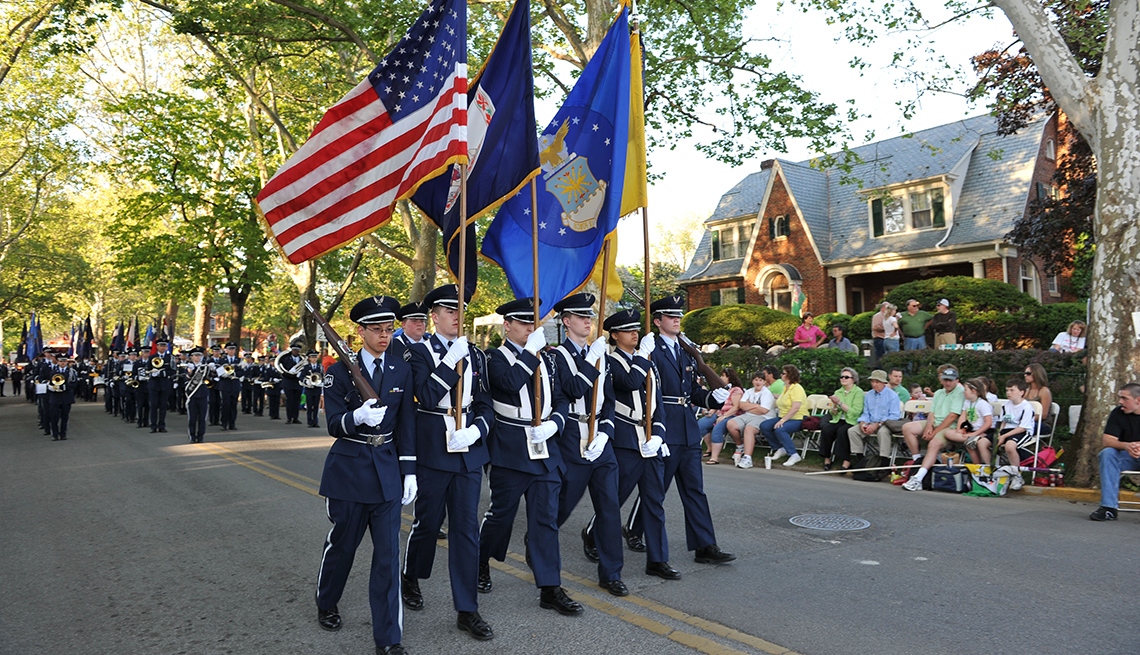
Michael Beslant
The July 4th parade in Winchester, Virginia, is one of the city's many signature celebrations.
Winchester, Virginia
For aspiring retirees who want space, fresh air and quietude but want it within arm's reach of a major city, Winchester, Va., is calling. Nestled in rolling horse country 65 miles west of Washington, D.C., Winchester is growing but still has a relaxed, unpretentious vibe. The metro area crosses north into West Virginia and harbors about 125,000 residents altogether; 26,000 live in Winchester proper.
See also: The best places to live the simple life
For budget-conscious retirees (and these days, who isn't?) Winchester offers a below-average cost-of-living and access to job training — for example, at Lord Fairfax Community College (enrollment 5,100) in Middletown, about 10 miles south of Winchester. Also, Shenandoah University (enrollment 2,900), in Winchester, welcomes older students at a Center for Lifelong Learning.
Retirees here split time between outdoor activities — golf courses abound, and George Washington National Forest and Shenandoah National Park are mere miles from town — and a historic downtown that boasts a variety of shops, restaurants and galleries. There is also an active equestrian scene, with a club for horsey folks that organizes shows, rides and exhibitions. The Great Allegheny Passage, a bicycle path that runs uninterrupted from Washington, D.C., to Pittsburgh, is just across the Potomac River a few miles north of the city.
Winchester has a nice little arts scene, too. The local symphony performs at the historic George Washington Hotel downtown, among other places. There's professional theater at the Wayside in Middletown, and community productions at the Winchester Little Theatre. Shenandoah University has a large conservatory, with student recitals and other performances.
On the West Virginia side of the area, where a mellower pace prevails, (Ridgeway, W.Va., is 10 miles north of town), the Hampshire County Arts Council links an active community of working artists who keep a lower profile. The substantial cultural assets of D.C.'s northern suburbs are within easy reach, especially if you avoid rush hour.
The area also shows off its history. Attractions include the surveying office George Washington used when he lived here in the 1740s; a Civil War center, numerous battlefields and a war-themed weekend held every fall; and the Patsy Cline Historic House, where the country music star lived with her mother and siblings.
For all its laid-back country charm, Winchester loves to throw grand parties. One high point on the social calendar is the Shenandoah Apple Blossom Festival in late April, an extravaganza that lasts more than a week and includes parades, concerts, a circus and the coronation of Queen Shenandoah.

Zuma Press, Inc./Alamy
Hiking, walking and cycling are among the popular outdoor activities among retirees in Corvallis, Oregon.
Corvallis, Oregon
Spend a little time in Oregon's Willamette Valley and you'll understand why so many settlers planted themselves here after surviving the Oregon Trail. Corvallis (translation: Heart of the Valley) sits in the middle of that broad valley between the Oregon Coast and Cascade mountain ranges in a pretty — and extremely fertile — swath of land.
See also: America's healthiest hometowns
The heart of Corvallis is Oregon State University (OSU, enrollment 19,000), which is a major research center for oceanography, aerospace, veterinary medicine and renewable energy. The 500-acre campus hosts art exhibits, plays, concerts and films, and is surrounded by the inviting trappings of many college towns — cafes, bars, bookstores and shops. But don't think it's all youngsters here: Aside from the large professional class, tourism brings solid waves of seniors to Corvallis every summer.
Downtown Corvallis, while not postcard perfect, does have a handful of nice boutiques, a decent selection of restaurants, including one that doubles as an organic farm. The regional wines are respectable, and the town has a popular and colorful Saturday farmer's market. Of the numerous festivals in and around Corvallis, the most popular is Da Vinci Days, a three-day celebration of arts, science and technology held every July.
Corvallis is 40 miles northwest of Eugene and 70 miles south of Portland (one-fifth of Corvallis' working population commutes to the Portland area). The metro area has few residents who consider themselves religious (only Medford, Ore., is lower) and in 2006 ranked second highest for percentage of scientists in the workforce (behind Boulder, Colo.).
In 2011, Corvallis had the highest percentage of residents in the U.S. who bike to work (9.3 percent) and ranked second in the percentage who walk to their jobs. Ninety-seven percent of the city's main roads have bike lanes, and almost 16 miles of bike trails run through the city. The Willamette and Marys rivers also run through town.
On the downside, many jobs in Corvallis pay poorly. Unemployment is below the national average but the cost of living is much higher than the median household income. The culprit is housing prices, which are near the top one-10th of all U.S. metro areas. On the plus side, most pension income in Oregon is free of state income taxes.
For the outdoorsy, the crest of the Cascade mountain range is about 75 miles east of Corvallis, with great skiing and hiking. The coast is 40 miles west, with beaches, the Oregon Dunes National Recreation Area and Siuslaw National Forest. OSU's research forests are crisscrossed with good mountain biking trails.
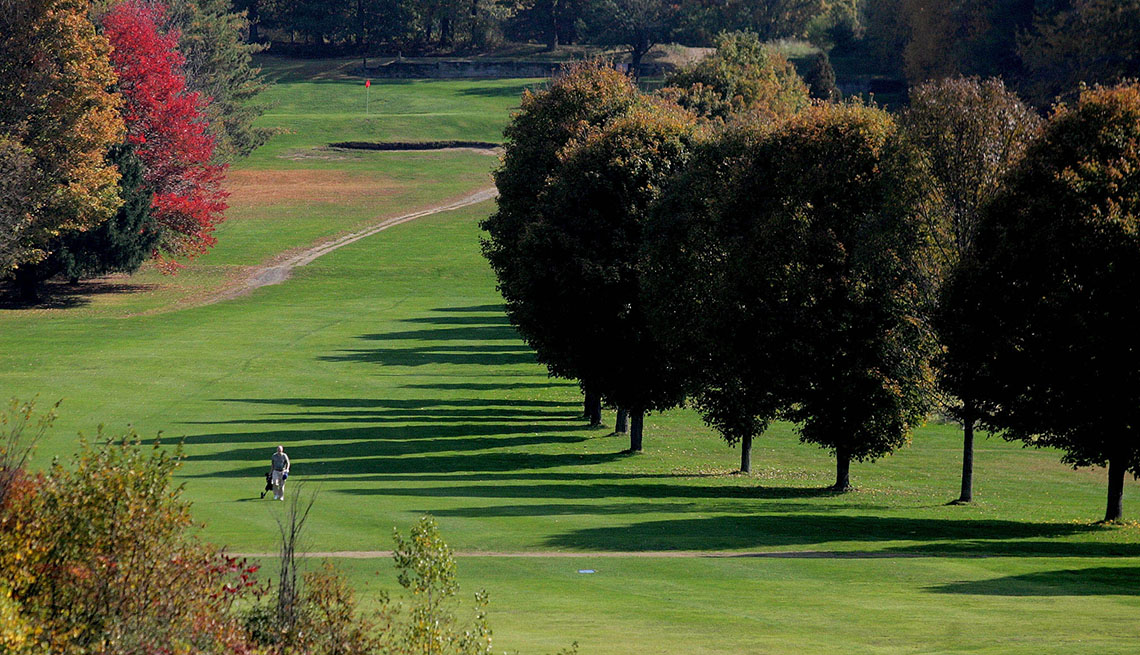
Jessica Rinaldi/Reuters
The Pioneer Valley around Springfield, Massachusetts, has broad appeal for retirees.
Springfield, Massachusetts
Seeking a small city that will make you feel young without making you act like a teenager? Springfield's burgeoning nightclub scene helps give the city a youthful energy but its dozens of restaurants and pubs, coupled with cultural offerings, provide ample adult environs for retirees to relax.
See also: 10 places for outdoors lovers
For the culturally inclined, museums, galleries and shows abound, including the Quadrangle, a cluster of five world-class museums on Chestnut Street, surrounding the Dr. Seuss National Memorial Sculpture Garden. For kids of all ages, the Eric Carle Museum of Picture Book Art celebrates the children's author.
Springfield is the heart of Pioneer Valley, Mass., which spans three counties — Franklin, Hampshire and Hampden.
That village feel is evident on the outskirts of some of the smaller cities, including Westfield (population 40,000), Holyoke (40,000), Amherst (34,000) and Northampton (28,000).
Springfield Symphony Hall, an ornate space built in 1911-1913, hosts classical music and traveling Broadway shows while its sister venue, CityStage features a wider range of performances.
For retirees seeking continuing education, opportunities abound. The University of Massachusetts-Amherst (enrollment 24,300) is the flagship of the state system, but there's more beyond that. The colleges of Hampshire, Amherst, Mount Holyoke, Smith and U. Mass-Amherst collaborate to offer courses to older learners through Five College Learning in Retirement. Springfield College offers a program of its own called Learning in Later Life.
There are also countless historical sites and home museums here, including the home of Emily Dickinson in Amherst and historic Deerfield, a pioneer village that has been preserved intact and is open for tourists.
Outdoor recreation opportunities are also abundant. Boating and fishing are popular on the Connecticut River and other nearby waterways. Mount Holyoke Range State Park offer hiking, horseback riding and cross-country skiing. For alpine skiing, the valley is an easy day trip to numerous small ski resorts. Golfers have numerous quality courses to choose form as well.
Drawbacks? The cost of living is in the top one-fifth of United States metro areas, but the median household income is only a little above the national average. Blame home prices, which took off during the housing bubble; foreclosures are a big problem in some parts of the metro.

David Paul Morris/Getty Images
Napa Valley is a popular place to retire for wine lovers and foodies.
Napa, California
In terms of its main attraction — wine — Napa, Calif., needs no introduction. But there is far more to this scenic town than matters of the grape. Historic buildings, hiking, biking, hot springs and spas are on tap, and the town of Napa is only an hour's drive from the coast (though it's a two-hour drive — when traffic is light — to the Golden Gate Bridge).
See also: 5 happiest cities in America
Given the Napa Valley's reputation for high-end wine, food and vacationing, it won't shock you that it's a pricey place to live. But, let's admit it: Those prices help keep things classy! Development is limited by strict regional zoning laws, which have saved the valley from mega-sprawl and preserved a small-town feel. The recession has impacted Napa, primarily by moving real estate prices from stratospheric to merely outrageous.
Napa is one of five towns in the valley and all have that California vacation town feel that makes for a great retirement locale. The other towns are Calistoga, Oakville/Rutherford, St. Helena and Yountville. Most of the valley is flat agricultural land, with side canyons cutting into tall, steep hills on either side. The hills protect the valley from wind and give it a stable Mediterranean climate that produces world-class wine.
There are hundreds of wineries in the region, including 24 tasting rooms in downtown Napa alone. But the town also includes dozens of other businesses, many lining an outdoor pedestrian town center. Many of course are high end, like the Mustard Seed (voted best clothing boutique in Napa Valley 16 years running) and Quent Cordair Fine Art, but there reasonably priced markets, outlet shops and department stores.
Many 19th-century buildings on Napa's main street have been saved and restored, including the Pfeiffer Building (1875), which is now a multi-winery tasting room, the Historic Napa Mill and the Napa Valley Opera House, which maintains a full calendar of musical and theatrical shows.
The town of Calistoga (population 5,000) and its famous hot springs and mud baths are 25 miles north of Napa. The vibe here is less precious than in Napa, and the town's small main street is convenient to decent hiking in the surrounding hills.
For retirees seeking expanded horizons, Napa Valley College (enrollment 7,700) as well as Pacific Union College (1,500 students) offer classes and programs.
Locals tend to be healthy, aided by the Mediterranean climate — pleasant, sometimes-cool winters and warm sometimes-hot summers — conducive to outdoor activity. Most of the 23 inches of annual rain fall November through March. Besides biking and hiking, outdoor recreation includes kayaking and sailing on San Pablo Bay (the north end of the San Francisco Bay), tennis, golf and the usual slate of beach sports along the coast, an hour west.
Lewiston, Maine
Artists, nature lovers and owners of thick winter coats unite! Lewiston, a post industrial town on the Androscoggin River, has quietly emerged as peaceful artist community — and retirement outpost — 30 miles north of Portland.
See also: America's friendliest cities
Lewiston is rarely mentioned these days without its companion city, Auburn, which occupies the opposing bank of the Androscoggin. Together know as L-A, the area is within an hour's drive of the coast, the mountains, Portland and Augusta, and is 120 miles northeast of Boston.
The attraction for the older set is in the numbers: a high percentage of locals are age 65 and older.
One major lure for retirees on a budget is affordable housing and, for the artistically inclined, spacious, affordable studio space, much of it in high-ceilinged, 19th-century buildings.
Such space is on prominent display in the Bates Mill Complex, a collection of former mill buildings that has been redeveloped into offices, retail shops and housing. One tenant, Museum L-A, highlights the textile, shoe and brick industries that once thrived here. The past is also celebrated at the Franco-American Heritage Center — roughly half of the metro's population reports French or French-Canadian ancestry.
Bates College (enrollment: 1,700) has a large art museum and the Olin Arts Center, which includes a 300-seat concert hall; both are adjacent to a downtown arts district that has several theater companies. The large public library downtown holds concerts and film festivals in its Marsden Hartley Cultural Center. The L-A area also hosts numerous annual festivals, including the Liberty Festival, Moxie Festival, FrancoFun and Great Falls Balloon Festival.
If you're in that "semiretired" mode and hoping to work, incomes here are fairly low: median household income and cost of living are near the lowest one-third of U.S. metro areas, and that has restrained some expansion of the area.
But encouraging signs abound, including the recent addition of a $13 million Marriott Residence Inn in downtown Lewiston. Also, the area has a very low crime rate, with violent crime almost unheard of (which makes one wonder where author Stephen King, a hometown hero, drew his inspiration).
For the active set, the Androscoggin River connects to hundreds of lakes and streams where anglers can cast for Atlantic salmon, striped bass and more. There's good cross-country skiing right in town, and many downhill ski areas are a short drive away. A local group maintains bike paths along the river and is expanding a network of footpaths across the region.
Also of Interest
- 11 things to never do again after 50
- 6 places to never use a debit card
- Quiz: What problems do low-income seniors face?
Join AARP Today — Receive access to exclusive information, benefits and discounts
See the AARP home page for deals, savings tips, trivia and more

